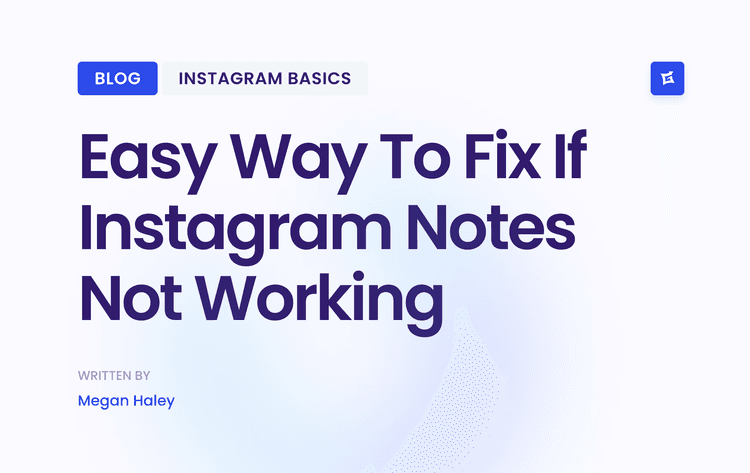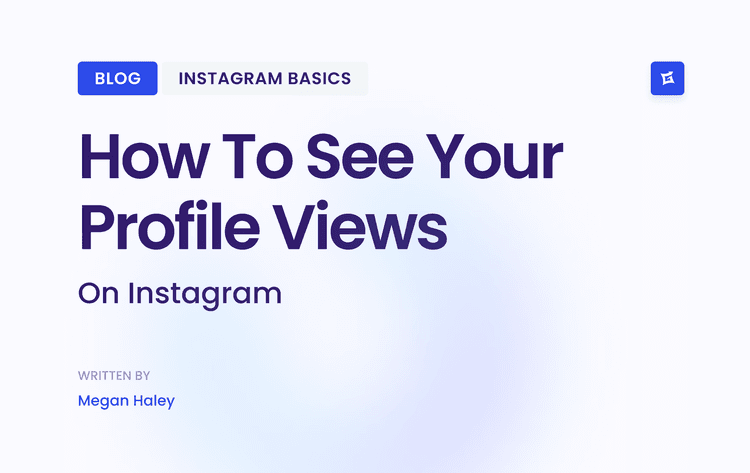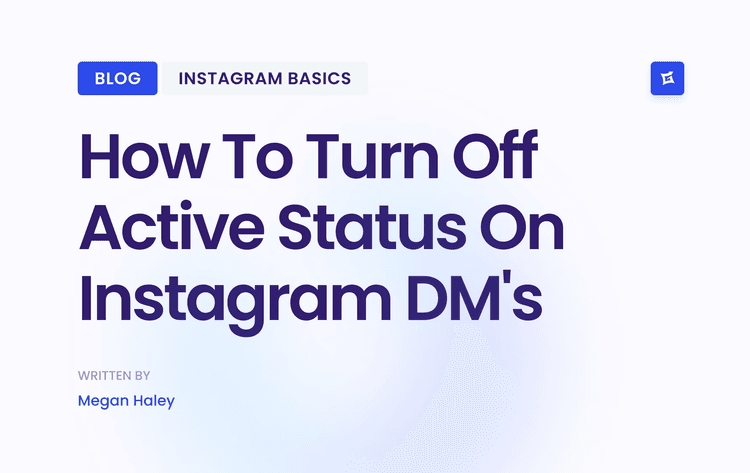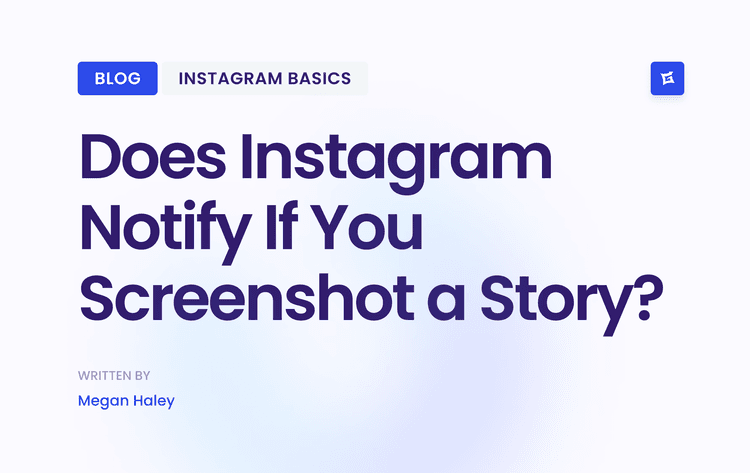Branding Brilliance: Learning from the Best
1. Mailchimp: Whimsy Meets Professionalism
Mailchimp (mailchimp.com) is a fascinating case study in brand building. What began as a side project has become a billion-dollar email marketing giant, with much of this success stemming from its distinctive and consistent branding approach. Their playful yet professional identity connects exceptionally well with small businesses and entrepreneurs—their core audience—making them worth studying for anyone interested in creating a strong brand. Are you interested in upscaling your brand organically, Mailchimp offers valuable lessons. You might also enjoy: Strategies for Organic Business Growth.

Mailchimp's brand identity rests on several key elements:
Consistent Visual Identity: Their hand-drawn illustrations and signature yellow and black color palettes create instant recognition.
Distinctive Mascot: Freddie the Chimp adds personality and approachability, making the brand more memorable.
Conversational and Approachable Voice: Their communication style remains friendly and helpful, avoiding technical jargon.
Strategic Use of Humor: Quirky campaigns like "Did You Mean Mailchimp?" strengthen brand recall and set them apart from competitors.
Pros:
Strong Brand Recognition: In a crowded market, Mailchimp's unique identity helps them stand out.
Appeals to Target Audience: The playful yet professional approach resonates with small businesses and entrepreneurs.
Scalable Branding: Their identity has grown with the company while staying true to its roots.
Cons:
Limited Appeal: The playful approach might not work for all sectors, especially those requiring a more formal image.
Resource Intensive: Maintaining custom illustrations and consistent visuals requires significant design resources.
Mailchimp's brand developed gradually under co-founders Ben Chestnut and Dan Kurzius, along with design partner Jen Klauss. Their 2018 rebrand, led by Collins Design Agency, refined their visual identity with a new typeface and updated illustration style while preserving the core brand personality. This consistency across all touchpoints—website, app, emails, social media—builds trust and reinforces their message. Read more about: Boosting Your Social Media Audience with Consistent Branding.
Tips for Implementing Mailchimp's Branding Strategy:
Define Your Personality: Start with a brand personality that reflects your values and connects with your audience.
Develop Distinctive Visuals: Create standout visual elements, whether through color, custom illustrations, or unique typography.
Maintain Consistency: Ensure your brand voice and visuals remain consistent across all platforms.
Embrace Personality: Don't shy away from showing character in your brand. A touch of humor can make you more approachable and memorable.
Mailchimp shows that small businesses can build powerful brands by focusing on personality, consistency, and deeply understanding their audience. Their journey offers valuable insights for any brand hoping to create a lasting impression, particularly in digital spaces.
2. Glossier
Glossier is a perfect case study of how authentic brand identity can upscale a small business into a major success story. What began as a beauty blog called Into The Gloss evolved naturally into a direct-to-consumer beauty powerhouse, showing how effectively connecting with an existing audience can fuel remarkable growth. The brand has earned its place on this list through its fresh approach to community engagement and smart social media strategy.
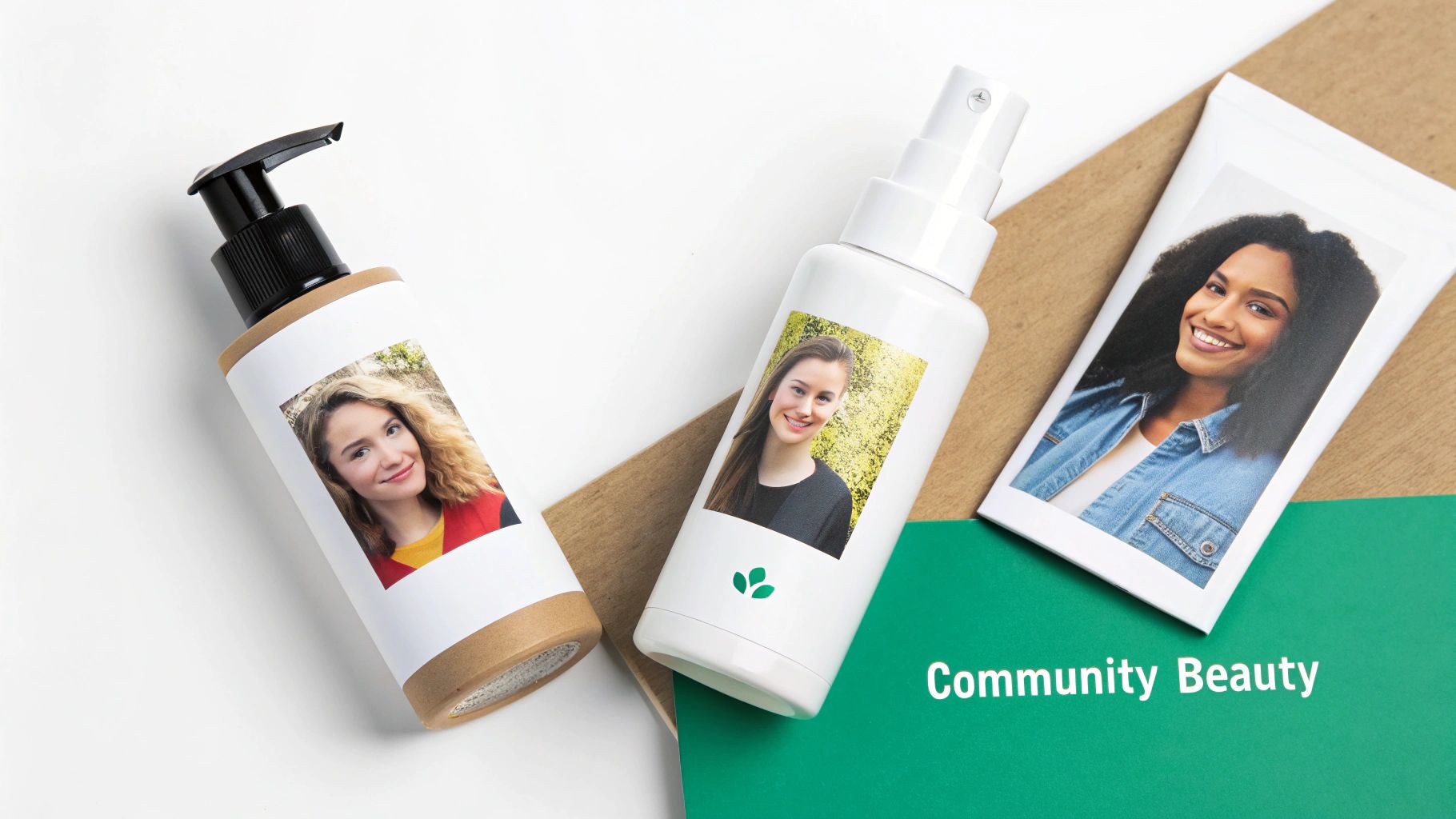
Glossier's identity is a commitment to minimalism, authenticity, and genuine customer connections. Their instantly recognizable minimalist packaging, with its signature pink, has become iconic in the beauty world. Rather than relying on traditional advertising methods, Glossier showcases real customers using their products as their main marketing approach. This strategy created a sense of trust and relatability that perfectly aligns with their "you, but better" philosophy.
Key Features of Glossier's Branding:
Minimalist packaging with signature pink: Creates a distinctive visual identity that stands out.
User-generated content as primary marketing: Builds genuine trust and authenticity with customers.
Community-driven product development: Ensures products meet customer needs and expectations.
Conversational, friend-to-friend brand voice: Creates stronger, more personal customer relationships.
Digital-first approach: Makes the most of online platforms to reach and engage customers.
Pros:
Created strong emotional connection with customers: Their focus on real people and natural beauty deeply resonates with their audience.
Built an engaged community that drives word-of-mouth: Glossier fans actively promote the brand without being asked.
Distinct aesthetic stands out in the crowded beauty market: Their clean design and signature pink create instant brand recognition.
Successfully transitioned from content to product brand: Effectively converted Into The Gloss readers into Glossier customers.
Cons:
Heavily dependent on social media platforms: Changes to algorithms or platform policies can impact their reach.
Struggles to expand beyond core demographic: Their specific aesthetic might limit broader market appeal.
The challenge to maintain a startup feel as the company grows: Keeping that intimate community connection becomes harder at scale.
Real-World Examples:
Instagram as a primary marketing channel: They regularly feature authentic customer content, building trust through real user experiences.
Glossier Reps ambassador program: They turn enthusiastic customers into brand advocates within their networks.
Instagram-worthy showroom stores: Their physical spaces are designed to encourage social sharing and extend brand awareness.
Tips for Implementation:
Build your brand around your customers' identity and aspirations: Understand who your audience is and what matters to them.
Cultivate a community before launching products: Focus on building relationships first, then introduce products when you have an engaged audience.
Incorporate customer feedback into product development: Show customers you value their input by using their suggestions.
Create shareable, visually consistent experiences: Develop a clear visual identity that encourages customers to share your brand with others.
Glossier's remarkable journey, led by founder Emily Weiss and fueled by the Into The Gloss blog community, shows how organic growth through authentic community engagement can create extraordinary results. Their story offers practical insights for small businesses, influencers, and content creators looking to build distinctive and meaningful brand followers.
3. Warby Parker
Warby Parker shows how smart branding can shake up an established market and create impressive growth. Their journey offers valuable insights for small businesses and startups looking to make their mark. By blending distinctive brand identity with customer-focused strategies, they've renewed eyewear retail and built a dedicated customer base.
When Warby Parker entered the market, a few major corporations dominated eyewear sales, with products often perceived as expensive and stylistically limited. They spotted these pain points and created a brand offering stylish, affordable glasses with a meaningful social mission. This approach is strongly connected with younger, value-conscious consumers.
Key Features of the Warby Parker Brand:
Vintage-inspired aesthetic with modern simplicity: Their frames blend classic, timeless elements while staying fresh and appealing.
Buy-one-give-one social mission: Warby Parker donates a pair of glasses to someone in need for every pair sold, attracting socially conscious customers and setting them apart from competitors.
Home try-on program: This clever solution eliminated a major obstacle to buying eyewear online by letting customers test frames at home.
Literary references throughout the brand: From naming frames after authors to designing bookstore-like retail spaces, they've created a distinct, intellectual brand personality.
Transparent pricing model: Their clear communication about costs builds trust and positions them as a fair alternative to traditional eyewear sellers.
Pros of the Warby Parker Approach:
Established clear brand differentiation: They carved out a unique position in a traditional industry by focusing on style, affordability, and social impact.
Created emotional connection through social mission: Their buy-one-give-one model builds community and shared values with customers.
Built trust through transparency: Open communication about pricing and business practices increases customer confidence.
Successfully transitioned from online-only to omnichannel: They've effectively expanded to physical stores while maintaining an online brand.
Cons and Challenges:
Competition: Their success has attracted many imitators, increasing competition in the direct-to-consumer eyewear market.
Maintaining startup feel: As the company has grown, keeping its initial energy and culture presents ongoing challenges.
Social mission commitment: The buy-one-give-one model requires continuous investment and dedication.
Real-World Examples of Warby Parker's Branding:
Annual reports presented as engaging 'zines: This unconventional approach reflects their quirky and literary-inspired personality.
Store designs that feel like stylish libraries: The bookstore atmosphere reinforces their intellectual and design-focused image.
Consistent, clean photography style: Their visual branding is instantly recognizable, strengthening overall brand identity.
Home try-on program that lowered purchase barriers: This innovation addressed a key customer concern and powered their early growth.
Tips for Implementing the Warby Parker Approach:
Identify pain points in traditional industries: Look for areas where established companies aren't meeting customer needs.
Build social responsibility into your business model: Consider including a social mission that aligns with your brand values.
Create brand experiences that reduce customer friction: Focus on making customer interactions seamless and enjoyable.
Maintain consistent storytelling across touchpoints: Ensure your brand message stays consistent across all channels, from website to social media to in-store experiences.
Warby Parker's story, made famous by its co-founders and early coverage in publications like GQ and Vogue, shows the power of building a brand that connects with customers on multiple levels. Their approach, centered on value, transparency, and social impact, offers a useful blueprint for any business wanting to build a strong brand identity and develop a loyal following.
4. Aesop
Aesop (https://www.aesop.com/) shows how a small business can build a globally recognized luxury brand through careful, consistent branding without relying on typical luxury marketing tactics. This Australian skincare company offers valuable lessons for influencers, small businesses, and brands looking to develop loyal followers and stand out in competitive markets. Their story highlights the power of focusing on quality, authenticity, and memorable customer experiences.
What makes Aesop different is their distinct combination of scientific-inspired packaging, literary and philosophical marketing, and one-of-a-kind retail spaces. Their trademark amber bottles, clean labels, and product descriptions that reference literature and science create a unique intellectual brand identity. This approach deeply connects with customers who value sophistication and understated elegance.
One of Aesop's most impressive branding elements is its dedication to creating unique retail experiences. Each Aesop store is individually designed by a different architect to reflect the local neighborhood's character. This approach rebuilds every location into a destination that physically embodies the brand's values. From in-store sink demonstrations that create sensory experiences to their choice to avoid traditional advertising, Aesop creates a sense of discovery and exclusivity. You might be interested in: [How Experiential Retail Can Elevate Your Brand].
This commitment to custom design extends throughout the brand, supporting its premium position. However, this curated approach comes with costs. The investment in unique store architecture, high-quality ingredients, and immersive retail experiences leads to higher production costs and premium pricing, which limits market reach. Yet this carefully crafted exclusivity is precisely what drives much of the brand's appeal.
Aesop's success didn't happen overnight. Founder Dennis Paphitis' vision, along with collaborations with respected architects and designers, helped build a cult following among design enthusiasts. This organic growth, fueled by word-of-mouth and unwavering brand integrity, allowed Aesop to expand globally while staying true to its core values.
Features:
Amber bottle packaging with minimalist design
Literature and philosophy-inspired marketing
Distinctive store designs unique to each location
Focus on product efficacy rather than miraculous claims
Sensory retail experiences
Pros:
Created premium positioning without traditional luxury marketing
Each store becomes a branding touchpoint through unique design
Built a loyal following through product quality and consistency
Successfully expanded globally while maintaining brand integrity
Cons:
High production costs for bespoke store designs
Premium pricing limits market reach
Requires significant investment in retail experience
Examples:
Each store was designed by different architects to reflect the local neighborhood (e.g., the minimalist concrete store in Silver Lake, Los Angeles, contrasts with the timber-clad store in Kyoto).
Product descriptions referencing literature and science (e.g., "A Rose By Any Other Name Body Cleanser").
Sink demonstrations in every store create a sensory experience.
Absence of traditional advertising relying instead on word-of-mouth and editorial features.
Tips for Implementation:
Invest in distinctive packaging that becomes recognizable: Your packaging is often the first physical interaction a customer has with your brand. Make it memorable.
Create consistent sensory experiences across touchpoints: Consider how all five senses can be engaged to create a holistic brand experience.
Focus on quality and authenticity rather than trends: Aesop's timeless aesthetic proves that quality and authenticity outlast fleeting trends.
Turn limitations into distinctive brand elements: Aesop's limited market reach, due to premium pricing, enhances its exclusive appeal.
For more brand inspiration and insights, explore other successful branding strategies at https://www.gainsty.com/brands. Read also: [Building a Brand Identity: A Guide for Small Businesses]. Aesop's success shows that even small businesses can build a globally recognized brand by prioritizing quality, consistency, and distinctive experiences. This carefully constructed approach makes Aesop a powerful case study for any brand aiming to build a loyal following and a strong brand identity.
5. BrewDog
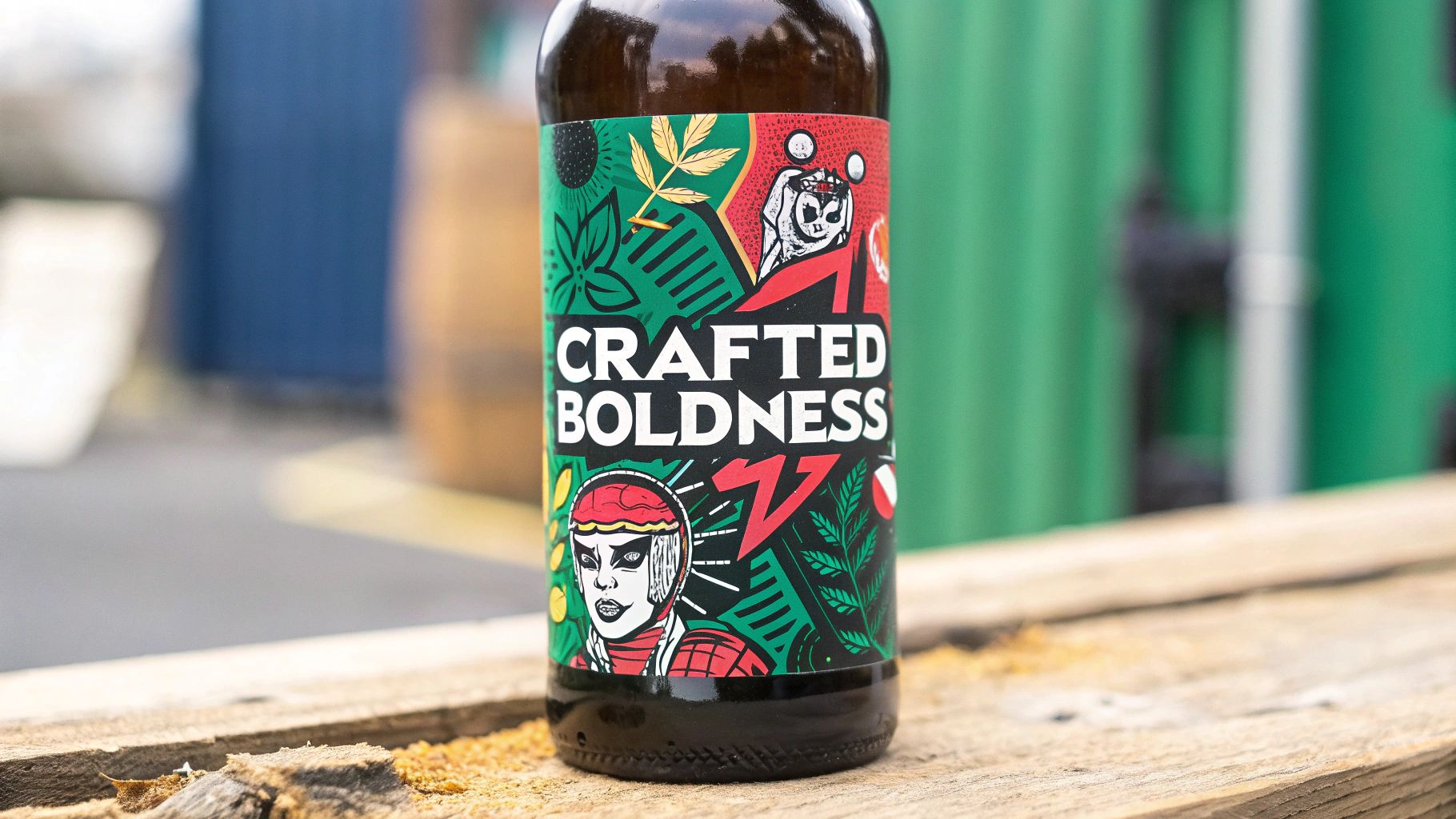
From humble Scottish beginnings to global recognition, BrewDog offers small businesses a masterclass in industry disruption and community building. Their story demonstrates how authentic branding, passionate fan engagement, and bold marketing can renew a small brewery into an international phenomenon.
At the core of BrewDog's identity is their rebellious punk rock spirit. This attitude runs through everything they do - from provocatively named beers like "Punk IPA" and "Dead Pony Club" to their eye-catching marketing campaigns. This distinctive personality has helped them connect with beer drinkers who appreciate their irreverent style and bold flavors.
What truly sets BrewDog apart is its groundbreaking "Equity for Punks" crowdfunding approach. This innovative model has raised an impressive £73 million while transforming thousands of customers into brand champions with a personal stake in the company's future. By blurring the boundary between customer and business owner, BrewDog created an army of enthusiastic supporters who feel genuinely invested in the brand's journey and success.
BrewDog has never shied away from attention-grabbing publicity stunts. From projecting images of themselves onto the British Parliament to packaging the world's strongest beer in taxidermied squirrels, they understand how to generate buzz. While these provocative tactics have occasionally backfired and drawn criticism, they undeniably fueled the company's rapid growth and global recognition.
Features:
Punk aesthetic and anti-establishment messaging
Equity for Punks crowdfunding model
Bold, provocative marketing stunts
Distinctive illustration style on packaging
Transparency in the brewing process
Pros:
Created a strong tribal following among craft beer enthusiasts
Generated massive PR through controversial marketing
Built customer loyalty through the partial ownership model
Successfully scaled while maintaining craft credibility (to a certain extent)
Cons:
A provocative approach has sometimes backfired
Challenges maintaining 'underdog' status as the company grew
Sometimes seen as inappropriately aggressive
Examples:
Projected founders onto the Houses of Parliament
Created the world's strongest beer packaged in taxidermied squirrels
Raised over £73 million through equity crowdfunding
Achieved Carbon Negative brewery status
Tips for Implementation:
Find genuine points of industry disruption: Don't just be provocative for the sake of it. Identify real problems in your industry and offer meaningful alternatives.
Create opportunities for customers to become brand advocates: Find creative ways to give customers a real stake in your company's success.
Use provocative marketing strategically: While controversy can generate attention, make sure it aligns with your brand values and resonates with your audience. Be ready for potential backlash.
Stay true to founding values even during growth: As your business expands, resist the temptation to compromise your core principles. BrewDog's challenges in maintaining its rebel image show the importance of staying authentic.
Popularized By: Co-founders James Watt and Martin Dickie, Documentary series 'Brew Dogs', 30,000+ 'Equity Punk' investors
BrewDog shows how a small business can use a strong brand identity, creative customer engagement, and bold marketing to shake up an established industry. Their journey offers valuable insights for any brand looking to stand out, particularly those hoping to build passionate communities around their products.
6. Casper
Casper (casper.com) shows how smart branding can shake up an old-fashioned industry. Their story reveals the strength of addressing customer frustrations, creating memorable experiences, and building a lifestyle around a product instead of just selling features. Small businesses and startups can learn valuable lessons from their approach.
When Casper entered the mattress market, consumers were tired of pushy salespeople, overwhelming options, and unpleasant shopping experiences. Casper completely changed the game by offering just "one perfect mattress" sold directly to consumers online. This strategy eliminated retail markups and allowed for better pricing, but their real success came from their distinctive branding.
Their blue and white color scheme, playful illustrations, and friendly mascots gave the brand a personality that customers loved. This approachable style extended to their content marketing, which focused on sleep culture rather than just mattress specs. By addressing a universal need—sleep—they made their message highly relatable. Their sleep-focused publication, Woolly Magazine, and the "Dreamery" nap space in New York City positioned Casper as a sleep authority, not just a mattress seller.
Creative marketing initiatives strengthened their brand identity. The mattress delivery box became part of an exciting unboxing experience, while clever subway ads featuring sleep-related copy generated buzz. Early viral unboxing videos, boosted by influencer partnerships, helped spread awareness organically. Co-founders Philip Krim and Neil Parikh used these strategies to bring Casper into the spotlight.
Features that fueled Casper's success:
Simplified product line ('one perfect mattress')
Distinctive blue and white color scheme
Whimsical illustrations and friendly mascots
Content platform focused on sleep culture (e.g., Woolly Magazine)
Creative outdoor advertising (e.g., subway ads)
Pros:
Rebuild a traditionally boring category into an engaging brand
Created a memorable unboxing experience
Built a brand around lifestyle rather than product features
Successfully expanded from a single product to a broader sleep company
Cons:
Faced increasing competition as the direct-to-consumer mattress model proliferated
Challenge to maintain differentiation beyond the initial disruption
High marketing costs to maintain awareness
Tips for implementation:
Look for pain points in traditional purchase experiences: Identify areas where you can simplify and improve the customer journey.
Create content that extends beyond your product: Become a resource for your target audience by offering valuable information related to their interests.
Design your packaging as part of the brand experience: Think beyond the functionality and consider how packaging can reinforce your brand identity.
Use humor to tackle mundane product categories: Inject personality and make your brand memorable by using humor appropriately.
Casper's success shows the power of thoughtful branding and customer-focused approaches. By understanding what their target audience truly wanted, they built a brand that resonates beyond just selling mattresses. Any small business or startup looking to grow can benefit from this customer-first mindset that puts experience at the heart of the brand.
7. Squarespace
Squarespace (squarespace.com) shows how a strong brand identity can rebuild a technical product into a desirable lifestyle choice. What began as a small website builder in a crowded market has successfully carved out a premium niche by focusing on sophisticated design and an all-in-one platform approach. This strategy has attracted a loyal following of creatives, entrepreneurs, and anyone seeking a polished online brand.
The company's branding revolves around a sleek, minimalist visual identity with high-end photography and videography. Their design-forward templates help users create stunning websites without coding knowledge, directly reflecting the brand's commitment to accessibility and ease of use. This approach is reinforced through their aspirational "Make It" messaging, which encourages people to pursue their passions online. Think Super Bowl ads featuring Keanu Reeves and Winona Ryder building their websites, or the ongoing "Make It" campaign highlighting real customer success stories. These examples show how Squarespace has rebuilt a technical product into a platform for self-expression.
Their premium positioning and consistent aesthetics across all marketing touchpoints have effectively targeted creative professionals and entrepreneurs. By making a technical product feel accessible through design, Squarespace demonstrates how branding can simplify complex concepts and connect with specific audiences. Their Squarespace Circle community for developers further reinforces their commitment to supporting users.
This approach does come with trade-offs. The higher price point compared to other website builders limits appeal to budget-conscious users. Additionally, the high production costs for their polished marketing and celebrity partnerships represent a significant investment. Squarespace also faces tough competition from other website builders constantly fighting for market share.
Pros:
Created premium positioning in a crowded market.
Consistent aesthetic across all marketing touchpoints.
Successfully targets creative professionals and entrepreneurs.
Made a technical product feel accessible through design.
Cons:
Premium positioning limits appeal to budget-conscious users.
High production costs for marketing materials.
Faces strong competition from other website builders.
Tips for Implementing the Squarespace Approach:
Identify clear design principles that guide all visual decisions. Squarespace's commitment to minimalism is evident in everything they do.
Create consistency between your product interface and marketing. The user experience should seamlessly reflect the brand's overall aesthetic.
Use customer success stories to demonstrate possibilities. The "Make It" campaign effectively showcases how real people are using Squarespace to achieve their goals. If you're a content creator seeking organic growth, consider documenting your journey. Read also: [How To Grow Your Audience Organically].
Invest in quality production that reflects your brand positioning. While you don't need Super Bowl-level budgets, ensure your visuals align with your brand's aspirational message.
Squarespace's success stems from founder Anthony Casalena's vision, amplified through strategic celebrity partnerships with figures like John Malkovich and Idris Elba, as well as notable users like Issa Rae and Leon Bridges. This combination of strong brand identity, clever marketing, and focus on user experience has secured Squarespace's position as a leading website builder and offers valuable lessons for businesses building their online brand. You might be interested in: [How to Build a Strong Online Brand For Your Business]. For creators looking to monetize their content and build a community, platforms like the one offered at Gainsty for creators can be invaluable resources.
8. Rapha
Rapha shows how a small business can go beyond selling products to create a thriving lifestyle brand with passionate followers. Rather than simply focusing on cycling clothes, they built a premium brand around cycling culture and passion. Through thoughtful design, powerful storytelling, and community focus, this London-based company renewed a niche interest to a brand community that drives impressive growth.
Rapha's signature black, white, and pink color scheme paired with stunning photography of epic rides makes them instantly recognizable. Their storytelling goes deeper than product descriptions, often exploring cycling history and culture in ways that connect emotionally with cyclists. This commitment extends to their physical spaces – Rapha Clubhouses – which serve as community hubs where cyclists gather, watch races, and experience the brand firsthand. This blend of product, content, and real-world experiences has been key to their success.
Several elements define Rapha's approach: their distinct visual identity, emotional storytelling about cycling culture, beautiful photography showcasing epic rides, physical clubhouses as community hubs, and premium positioning through quality materials and design. Their community initiatives include the Rapha Cycling Club membership, cycling films and documentaries, the yearly 'Festive 500' challenge, and even thoughtful packaging containing stories. These efforts built a loyal following willing to pay premium prices for the complete Rapha experience. The brand gained wider recognition through partnerships with pro cycling teams like Team Sky and EF Education First, along with early support from cycling influencers. Founder Simon Mottram's clear vision was crucial in creating the brand's unique identity.
Pros:
Created a category-defining approach to cycling apparel.
Built a loyal community willing to pay premium prices.
Successfully blended product and experiential elements.
Extended the brand through physical locations and events.
Cons:
Exclusivity can sometimes be perceived as elitist.
High price points limit market reach.
Requires significant investment in content creation.
Tips for implementing Rapha's strategies:
Build your brand around passion, not just products: Focus on the emotional connection consumers have with your niche.
Create content that celebrates your community: Share stories, highlight achievements, and foster a sense of belonging.
Consider physical spaces as brand extensions: Create opportunities for your community to connect offline.
Invest in high-quality photography that tells your story: Visuals are powerful tools for communicating brand values.
Rapha deserves its place on this list because it demonstrates the power of community building and storytelling in creating a highly successful brand. It offers valuable lessons for businesses of all sizes, particularly those operating in niche markets, showcasing how to cultivate brand loyalty, command premium prices, and build a truly engaged community.
9. Impossible Foods
Impossible Foods (impossiblefoods.com) shows how a small business can shake up a massive industry through smart branding. They began as a food-tech startup with a clear mission: create plant-based meat alternatives that satisfy meat lovers. Their journey offers valuable insights for any brand trying to stand out in a competitive market.

Impossible Foods' branding brilliantly combines scientific innovation with environmental purpose. Their distinctive white and red packaging and bold typography immediately catch your eye. Their science-focused storytelling and emphasis on reducing environmental impact connect with consumers who care about sustainability.
Features that fueled their success:
White and red color scheme with bold typography: Creates a powerful visual identity that jumps out in grocery stores and on restaurant menus.
Science-forward storytelling: Highlights the innovative technology behind their products, building trust and interest.
Environmental impact messaging: Attracts environmentally conscious consumers and positions them as a responsible choice.
Restaurant-first launch strategy: Helped them gain early validation from chefs and create buzz through exclusive partnerships.
Distinctive 'bleeding' product demonstration: Created a viral marketing sensation that showcased the product's meat-like qualities.
Pros:
Created strong differentiation in the alternative protein space: They didn't position themselves as just another veggie burger; they aimed to replace meat entirely.
Built brand recognition through strategic restaurant partnerships: Working with renowned chefs like David Chang and restaurants like Momofuku generated significant attention.
Successfully positioned as a premium ingredient rather than a vegetarian alternative: This attracted a wider audience beyond vegetarians and vegans.
Created a strong media narrative through technical innovation: Their focus on science generated media interest and established them as industry leaders.
Cons:
Faced scrutiny over the processed nature of their products: Questions about ingredients and processing methods created communication challenges.
Challenge communicating complex science to consumers: Making the science behind their products understandable without losing credibility proved difficult.
Heavily dependent on partnerships for initial growth: While successful, this reliance also created a potential vulnerability.
Real-World Examples:
Exclusive restaurant launches: Initial rollout through high-end restaurants like Momofuku created an aura of exclusivity and desirability.
Viral 'bleeding' burger demonstrations: These eye-catching demonstrations highlighted the product's unique qualities and generated significant online buzz.
Celebrity endorsements: Using celebrity investors like Serena Williams and Katy Perry as brand ambassadors expanded their reach.
Strategic partnership with Burger King: The Impossible Whopper launch dramatically boosted brand awareness and accessibility.
Tips for Implementation:
Lead with your mission but deliver on taste and performance: Consumers need to be convinced of your product's quality first and foremost.
Consider strategic partnerships for initial distribution: Partnering with established brands can help you reach a wider audience faster.
Create memorable product demonstrations: Find creative ways to showcase your product's unique selling points.
Position as a 'better alternative' rather than a 'substitute': Focus on the added benefits of your product, not just how it compares to existing options.
Impossible Foods' rise to success came from a mix of innovative technology, smart branding, and clever marketing. Their story, championed by founder Pat Brown, early adopter Chef David Chang, and celebrity investors, shows the power of clear messaging, strategic partnerships, and memorable product demonstrations. Their approach offers a valuable blueprint for small businesses looking to make a big impact.
10. Everlane
Everlane (everlane.com) shows how small businesses can use transparency as a powerful branding tool. Their "radical transparency" approach, created by founder Michael Preysman, makes ethical manufacturing, clear pricing, and minimalist design their core brand pillars. This strategy connects deeply with today's conscious consumers, showing how values-based branding can help a company stand out in a crowded market.
Everlane started as a direct-to-consumer brand focusing on basic apparel. Rather than using flashy marketing, they highlighted their commitment to ethical factories, fair wages, and sustainable materials. This message strongly connected with tech professionals in San Francisco, who appreciated the brand's honesty and clean aesthetic. By partnering with ethical influencers, they further spread their message.
Features that define Everlane's transparent branding:
Radical transparency in pricing and manufacturing: Everlane shows detailed cost breakdowns for each product, revealing materials, labor, transportation, and markup costs. They showcase their factory partners with detailed profiles and factory tours, giving customers visibility into their supply chain.
Minimalist, timeless design aesthetic: The brand focuses on simple, high-quality basics that match its transparent philosophy. This approach avoids short-lived trends, promoting longevity and reducing waste.
Factory stories and partner highlights: By sharing stories about the people and places making their products, they humanize the manufacturing process and strengthen their commitment to ethical production.
Limited product drops rather than seasonal collections: This approach reduces waste and creates a sense of exclusivity, setting Everlane apart from fast-fashion brands.
Environmental initiatives like ReNew recycled materials: Their commitment to sustainability, shown in the ReNew collection made from recycled plastic bottles, reinforces their values-driven identity.
Pros of Everlane's approach:
Created differentiation through business practices rather than aesthetics: Their transparency gives them a unique position in the competitive fashion industry.
Built trust through transparent communication: Openly sharing information about costs and manufacturing builds customer trust.
Successfully positioned basics as a premium through the ethical story: By highlighting ethical production, they justify higher prices for essential items.
Expanded loyal customer base through consistent values: Their steady commitment to transparency has built a dedicated following.
Cons of Everlane's approach:
Transparency claims occasionally questioned by industry watchdogs: As they've grown, maintaining complete transparency has become more challenging, leading to some scrutiny.
Challenge maintaining transparency at scale: The complexity of global supply chains makes consistent radical transparency difficult as a company expands.
Premium pricing limits market reach: The higher prices needed for ethical production can make their products less accessible to some consumers.
Examples of Everlane's transparency in action:
Detailed cost breakdowns for each product on their website.
Factory tours and worker stories are shared on their blog and social media.
The "Choose What You Pay" Black Friday model, offers customers different pricing tiers and explains the impact of each choice.
The ReNew collection is made from recycled plastic bottles, showing their commitment to sustainability.
Tips for implementing transparent branding:
Find authentic values that can become brand differentiators: Identify values that connect with your target audience and align with your business practices.
Communicate your supply chain as part of your brand story: Share information about your sourcing, manufacturing, and partners.
Create visual consistency that reflects brand values: Use imagery and design that matches your brand's transparency and ethical commitments.
Make ethical choices visible to customers: Highlight your sustainable practices, fair labor standards, or charitable giving.
Everlane's story shows transparency can be a powerful way to stand out, attracting customers who care about ethical and sustainable practices. By embracing genuine values and communicating them clearly, small businesses can build trust, create loyalty, and find their unique place in the market. Everlane offers valuable lessons for any brand wanting to connect with customers on a deeper level.
Top 10 Small Business Branding Examples – Quick Comparison
Mailchimp has a moderately complex implementation due to its integrated playful design. It requires high design resource demand and leads to strong brand recognition and growth. It is ideal for SMEs that embrace personality and humor. A key advantage is its memorable mascot and consistent, authentic voice.
Glossier follows a streamlined, social media-driven approach with a low to moderate digital resource focus. It creates a cult following and an engaging community. This branding approach suits beauty brands that prioritize authenticity and minimalism. A major advantage is its user-generated content and community-driven development.
Warby Parker balances online and offline execution with retail innovation. It requires a moderate-to-high investment in retail logistics and results in high trust and market disruption. It is ideal for traditional industries that need fresh, transparent narratives. One of its key strengths is its strong social mission and transparent pricing.
Aesop demands high implementation complexity due to bespoke retail and conceptual design. It requires significant investment in architecture and design, leading to premium global positioning. Luxury niche brands focused on unique experiences benefit most from this branding strategy. Its distinctive store ambiance and minimalist elegance set it apart.
BrewDog adopts a complex branding approach due to its provocative and disruptive marketing. It involves moderate investment with risk in bold campaigns but fosters strong community engagement and viral PR. Brands seeking an edgy, countercultural identity can benefit from this strategy. The brand's bold, provocative messaging and community ownership are key advantages.
Casper utilizes a simplified direct-to-consumer (DTC) model with creative, engaging campaigns. It requires a moderate marketing spend for widespread appeal, leading to a revitalized consumer experience and broad engagement. It works best for disruptive sectors aiming to redefine customer journeys. Its clever rebranding and experiential unboxing add to its uniqueness.
Squarespace has a highly complex branding approach due to extensive design and quality production. It demands a high production and marketing budget, which results in elevated premium market positioning and brand trust. This branding suits creatives and entrepreneurs who seek professional aesthetics. Its consistent, aspirational design and messaging are key strengths.
Rapha integrates digital content with physical community events. It involves a high investment in storytelling and event experiences, fostering a cult brand community with premium loyalty. Lifestyle brands targeting niche passions and experiences benefit from this approach. The brand excels in seamless experiential marketing and community building.
Impossible Foods leverages an advanced approach by merging tech innovation and strategic partnerships. It requires high R&D and strategic marketing expenditure, positioning itself disruptively in the food-tech sector with a strong media impact. This branding approach benefits brands that leverage scientific innovation and environmental missions. Its science-forward narrative and bold product demonstrations are standout advantages.
Everlane takes a moderate approach with an emphasis on transparent operations. It requires a moderate investment in supply chain transparency, leading to trust-driven loyalty and ethical market differentiation. Ethical fashion and retail brands emphasizing transparency find this branding strategy beneficial. Its radical transparency and commitment to authentic ethical practices distinguish it from competitors.
Building Your Brand: Key Takeaways
From Mailchimp's playful personality to Everlane's radical transparency, the branding examples we've explored show how powerful a well-defined brand identity can be. These businesses across different industries prove that success comes down to being authentic, staying consistent, and truly understanding your audience. Every element matters in building a brand that connects with people - from your brand story to visual elements to how you engage with customers.
When applying these principles to your own business, take time to identify what makes you special. What core values drive your company? What unique problems do you solve for customers that others don't? Once you clearly understand your brand's essence, you can express it through tangible elements like your logo, website design, messaging, and social media brand. Consistency is crucial - make sure your brand identity appears the same way across all platforms to create a cohesive experience that sticks in people's minds.
Remember that building a successful brand never really ends. It requires ongoing learning and the flexibility to change as markets evolve. Keep an eye on emerging trends, watch what your competitors are doing, and most importantly, listen to your customers. Their feedback is priceless for shaping your brand and keeping it relevant. The digital branding world keeps changing - short-form videos, influencer partnerships, and personalized experiences are gaining traction. By staying flexible and embracing new ideas, you set your brand up for long-term success.
Key Takeaways:
Authenticity: Be true to your brand values and let your unique personality shine through.
Consistency: Maintain a cohesive brand identity across all platforms and touchpoints.
Connection: Build genuine relationships with your target audience by understanding their needs and aspirations.
Adaptation: Stay informed about industry trends and adapt your strategy accordingly.
Ready to boost your brand followers and grow your Instagram following organically? Gainsty is your AI-powered solution for real follower growth. We connect you with actual followers who engage with your content and expand your reach - no bots or fake accounts involved. Whether you're an influencer or an established brand, Gainsty offers customized strategies, expert guidance, and round-the-clock support to help you succeed in the competitive social media landscape. Start seeing real results on Instagram today – visit Gainsty now!
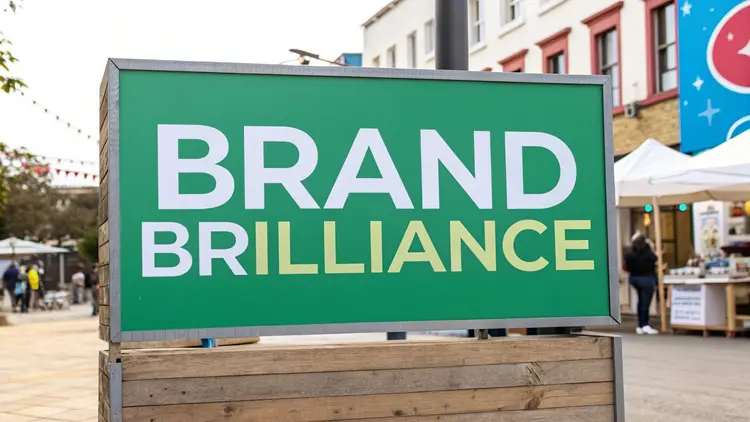
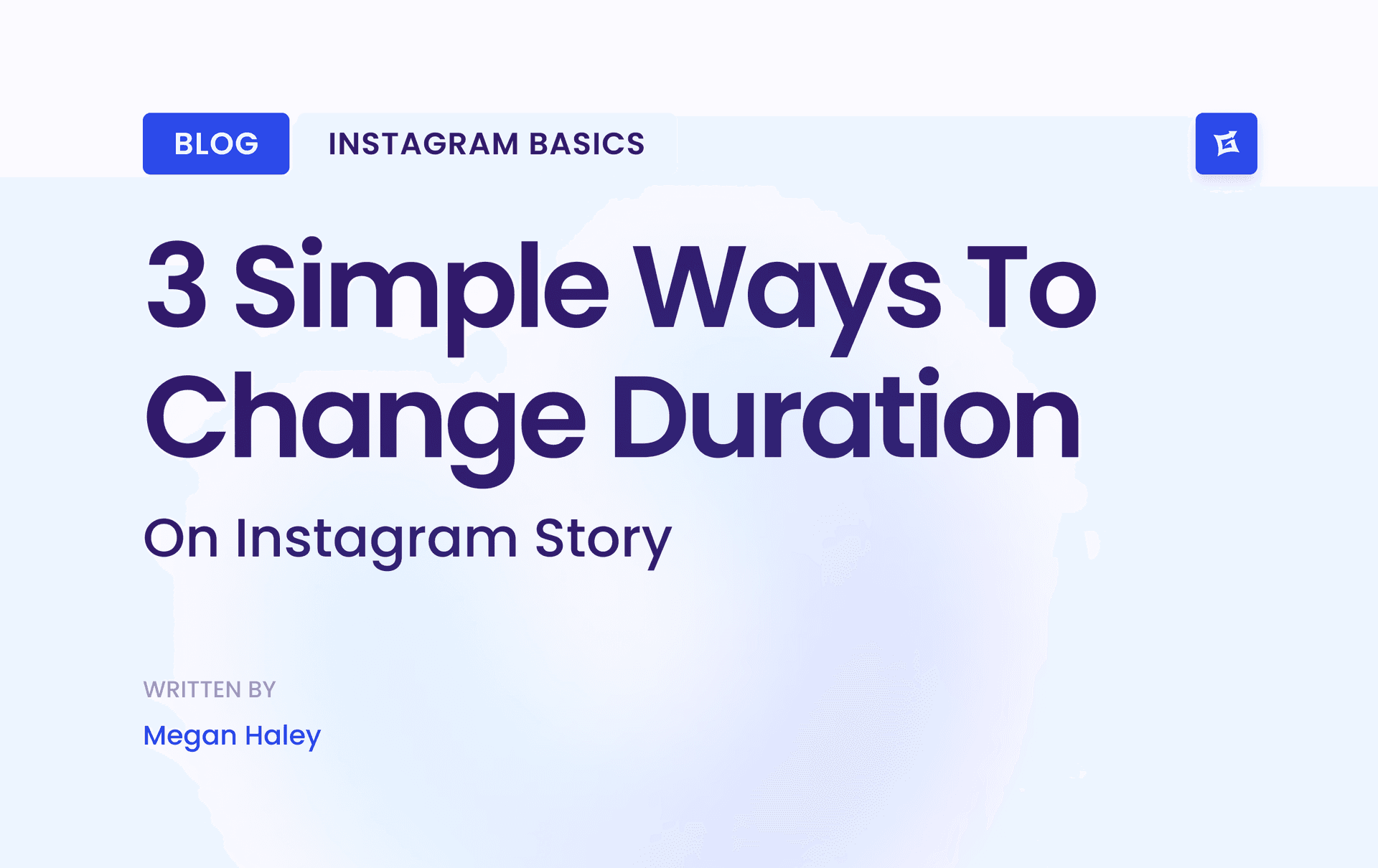
.png&w=1920&q=75&dpl=dpl_9XSWKBjhcBN6v6b1SN7m3p1WWjfr)
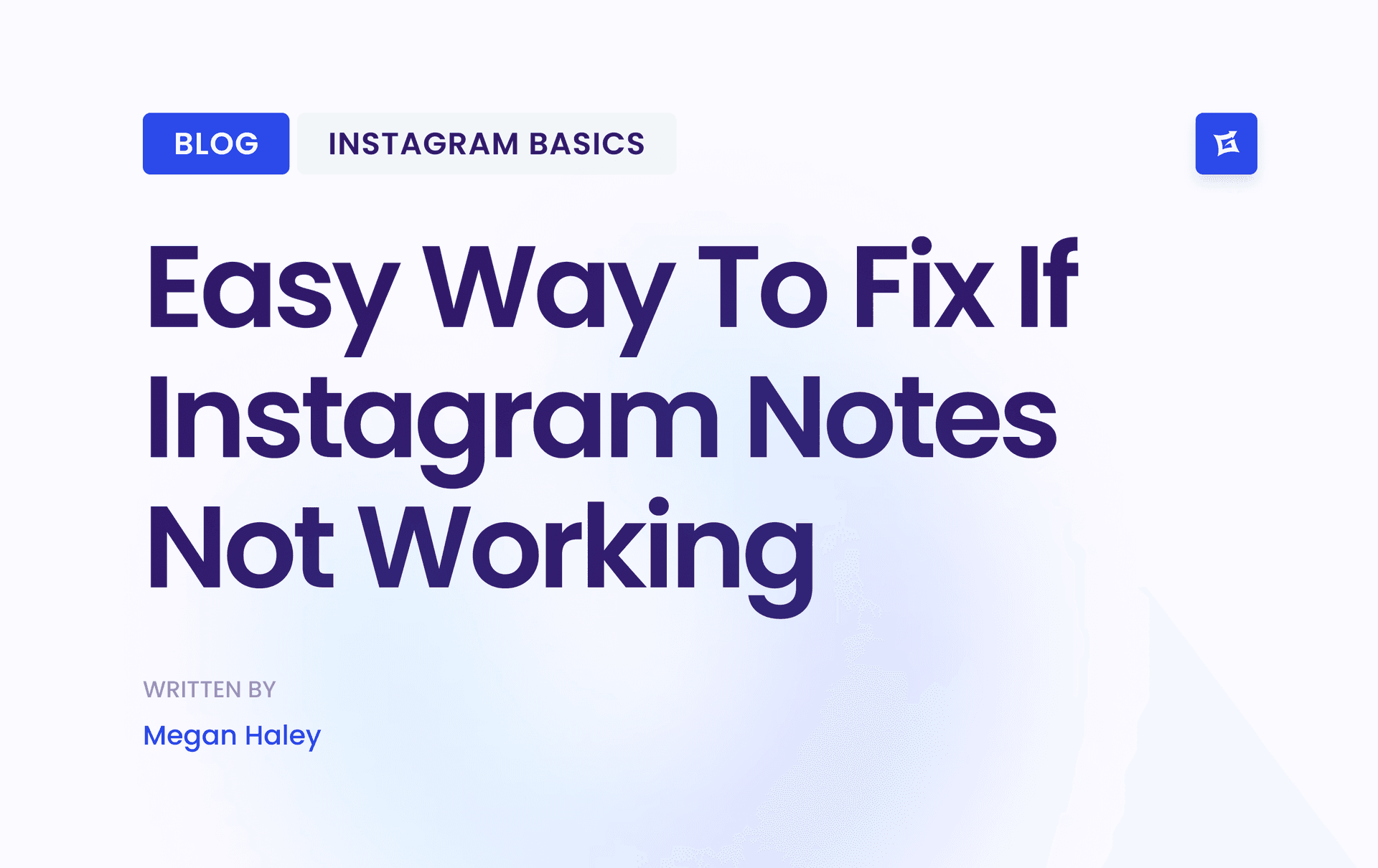
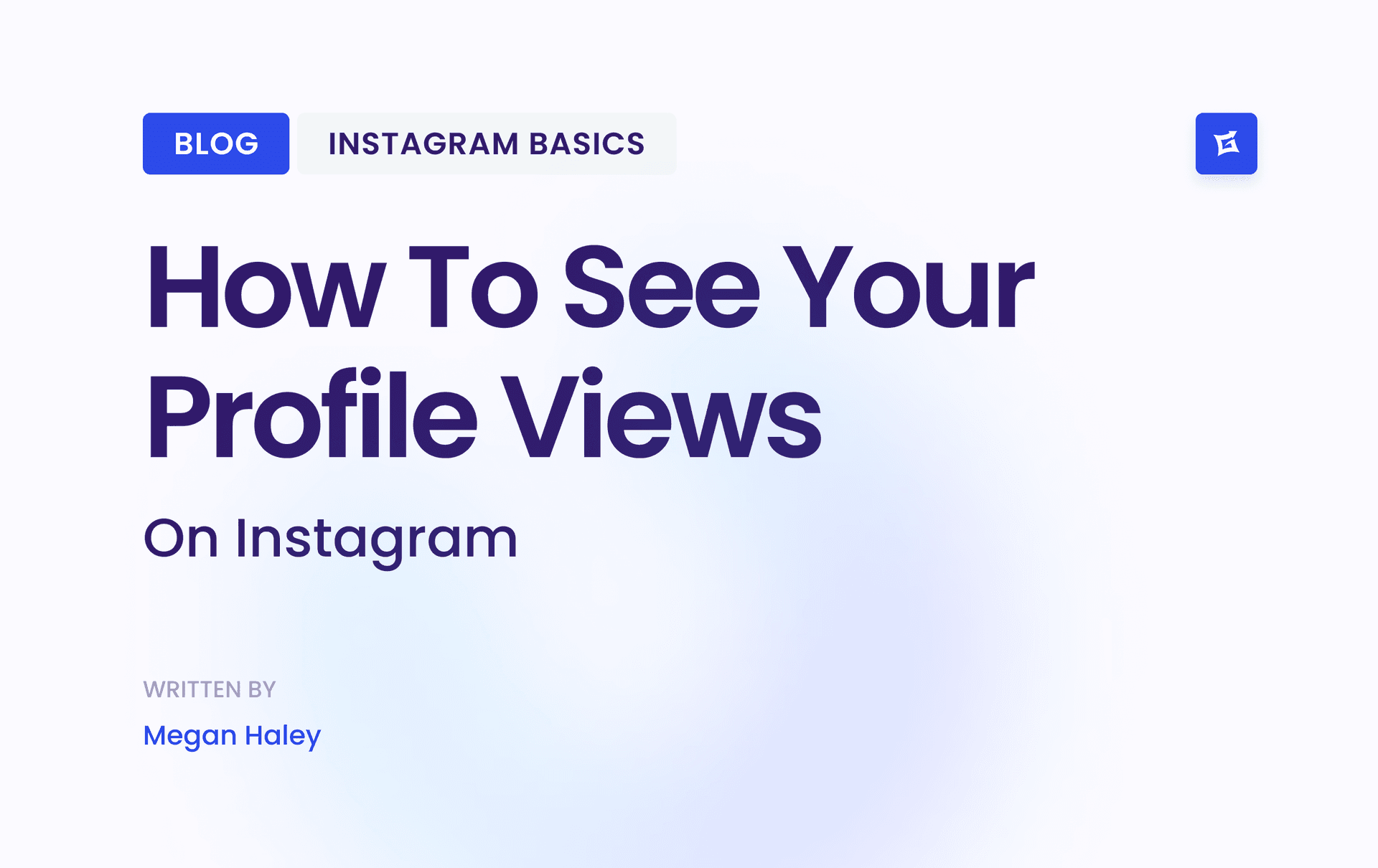
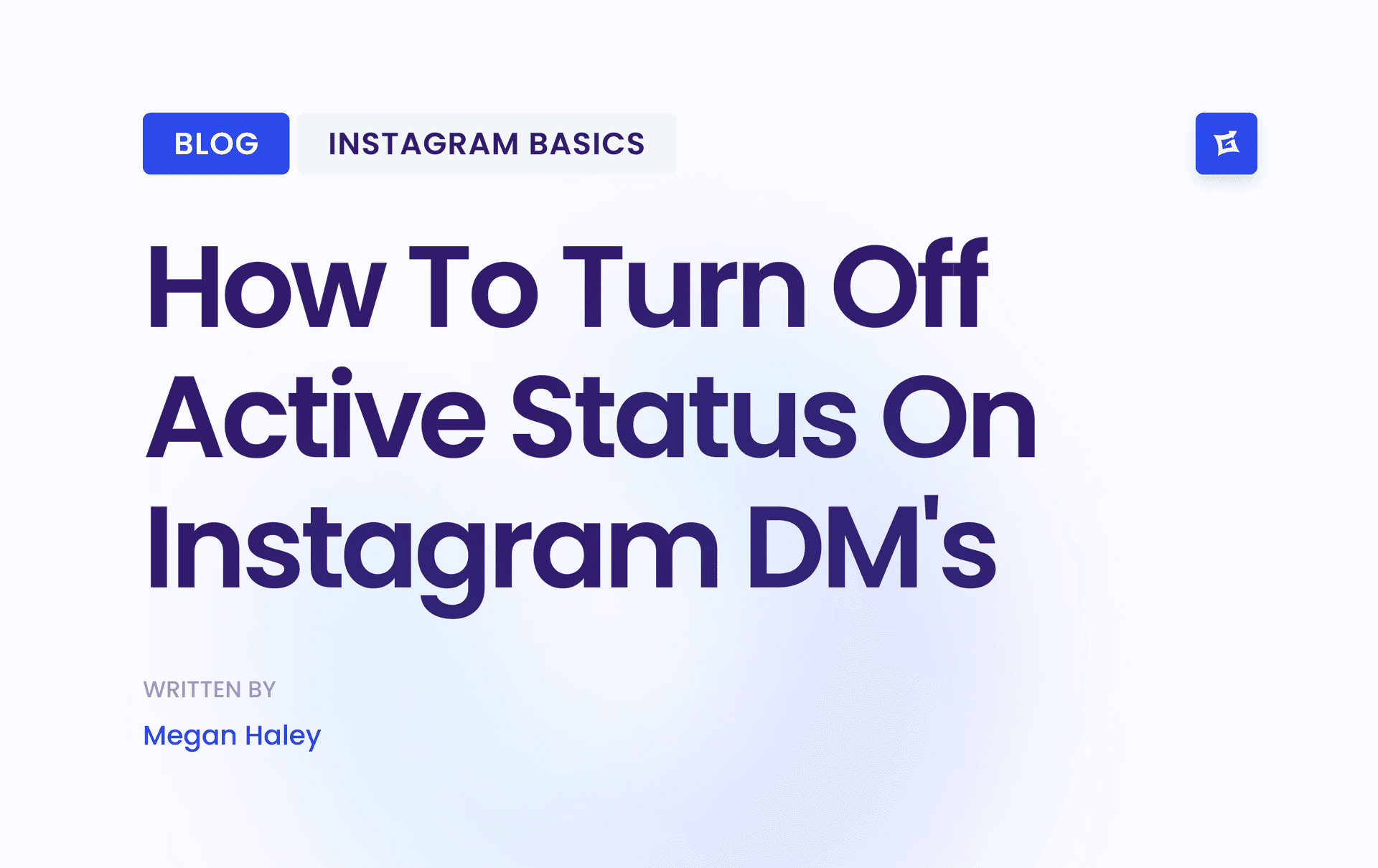
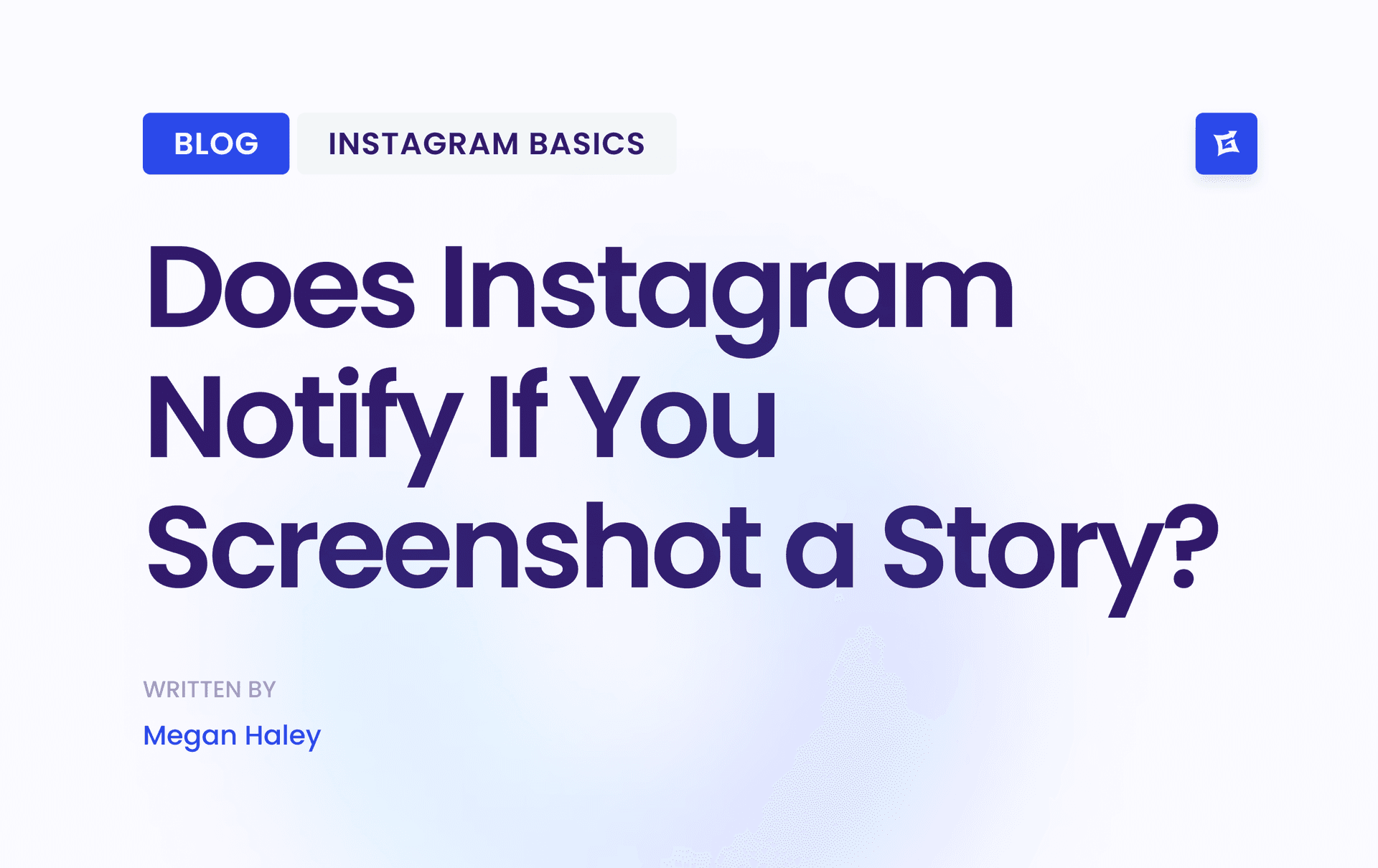



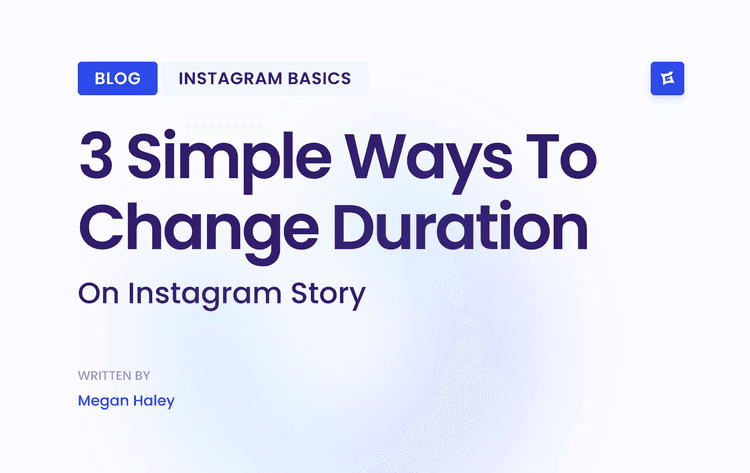
.png&w=750&q=75&dpl=dpl_9XSWKBjhcBN6v6b1SN7m3p1WWjfr)
